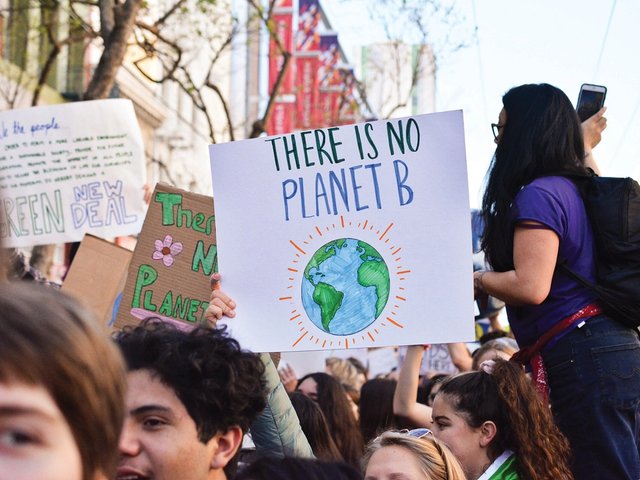As the arts sector contends with its impact on climate change, artists, institutions and art fairs are grappling with how to measure and reduce the toll of their activities. While there is no one-size-fits-all solution, the Art Dealers Association of America (ADAA) has spent the past year-and- a-half creating a sustainability roadmap to reduce the climate impact of its annual Art Show fair. From biodegradable exhibitor badges to energy-efficient lighting, the roadmap provides sustainable alternatives for every aspect of production. The document will be publicly available to benefit other fairs and exhibitors, and highlights the products vendors should expect to provide in the future.
The roadmap illustrates the power of collaboration. When planning the 2022 edition of The Art Show, committee member Todd Hosfelt asked the ADAA to make sustainability part of its operations. They agreed and Hosfelt suggested bringing on design and architecture firm Gensler, which provides strategic sustainability and decarbonisation initiatives for the built environment but had never applied this support to an event like an art fair.
“We had to devise a means of working with exhibitors to track their climate impact,” says Maureen Bray, the executive director of the ADAA. They reached out to Laura Lupton, the co-founder of Galleries Commit, a sustainability group that helps create climate impact reports for exhibitions. “Laura customised her form for exhibitors at The Art Show. We tested the result on five volunteer exhibitors and will expand this group in 2023.”
Only through a collective effort will it be possible to enact real environmental changeMaureen Bray, executive director, ADAA
The process was “eye opening and humbling”, Hosfelt says. “A detailed deep-dive into emissions associated with an art fair has been illuminating and sobering.” The main emissions were from travel and the shipping of art, followed by lodging, printing and lighting. The report also highlighted areas where the fair and exhibitors were already taking emission-reducing steps, such as using sustainable signage.
A key feature of the roadmap is its tiered approach to sustainable strategies. With Gensler’s guidance, the team assigned a timeframe and priority level for each strategy, taking into consideration limiting factors such as budgets. The short-term strategies (one to two years) include travel options with lower carbon emissions, while mid-term (three to five years) and long-term changes (five years and longer) centre on bigger projects like stand design.
“The key is to make it as easy as possible,” Hosfelt says. “If, beginning in the application process and moving through all phases of design, logistics and the fair itself, people know what the carbon implications of their various choices are, and you give them options, they can make informed decisions.”
Bray offers a similarly hopeful message to others debating the “admittedly daunting” task of addressing sustainability: “You can’t possibly do it alone, and can’t possibly expect to do everything at once,” she says. “The art world needs to come together to ensure the sustainability of our shared future; only through a collective effort will it be possible to enact real environmental change that’s greater than the sum of our individual actions.”
A holistic approach was also advocated during a two-day summit in London last month, organised by the Gallery Climate Coalition (GCC), an international charity initially established by a group of dealers in 2020. Moving beyond the commercial sector, the summit focused on the environmental issues facing the UK’s public arts institutions, with speakers including Areeba Hamid, the co-executive director of Greenpeace UK; Nick Merriman, the director of the Horniman Museum; and Frances Morris, the outgoing director of the Tate, who said that museums “need to rethink the model of collecting”.
In order to keep moving the needle, last month the GCC also launched Active Member designation, which requires its members to complete an emissions report or carbon audit and set targets accordingly; establish in-house “green teams”; and publish an environmental responsibility statement outlining their commitment to action.





